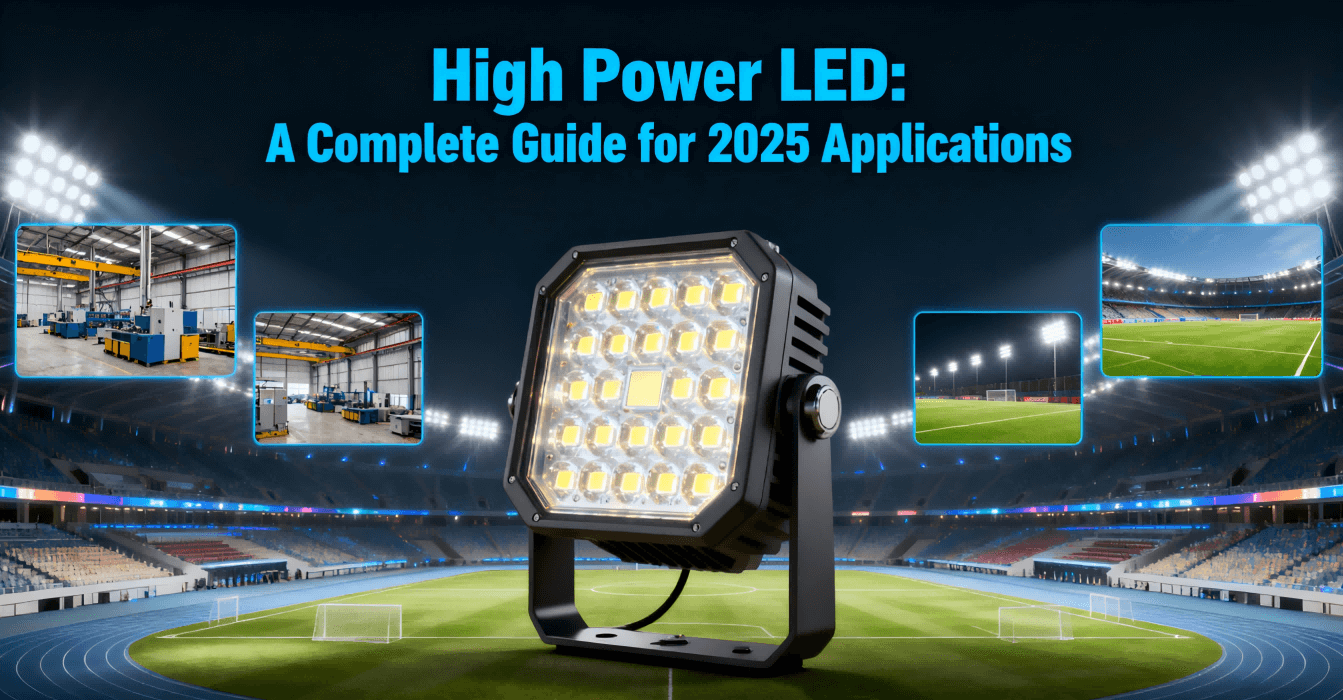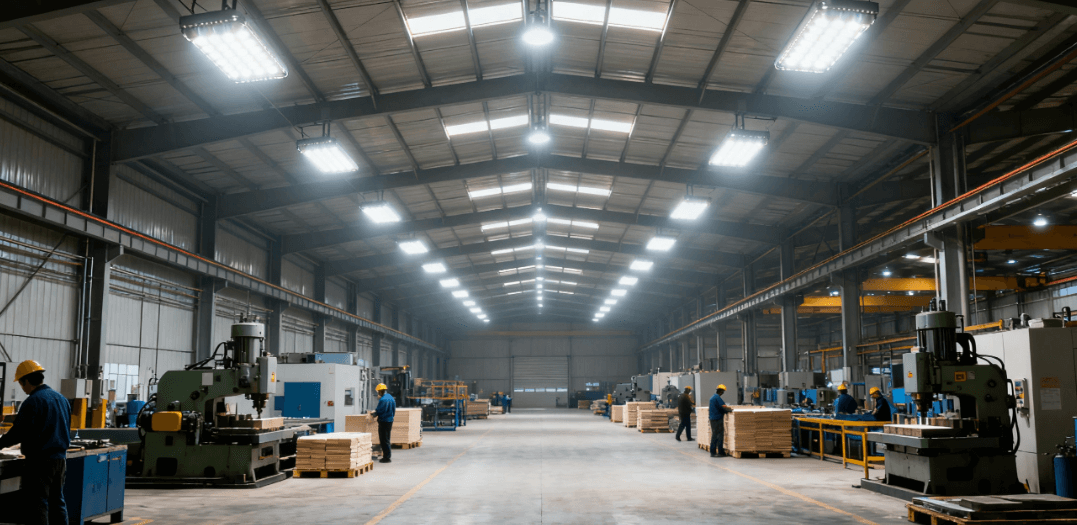What Is A High Power LED? A Complete Guide for 2025 Applications

The lighting industry has undergone a radical transformation in recent years, and at the center of this shift is the high power LED. Unlike conventional light-emitting diodes designed for low-intensity indicator functions, high power LEDs are engineered for demanding environments where strong illumination, reliability, and energy efficiency are critical. In 2025, the high power LED light is not only a preferred technology—it has become the backbone of industrial, automotive, and architectural lighting solutions worldwide.
This guide provides a complete explanation of what defines a high power LED, how it differs from standard LEDs, its performance features, and the key applications where its benefits are most evident.
Defining A High Power LED
A high power LED is a solid-state lighting device capable of operating at much higher electrical currents than conventional LEDs, typically 350 mA up to several amps. This higher current translates into dramatically greater light output, making them suitable for large-scale and professional illumination projects.
Core characteristics of high power LEDs:
High lumen output: Delivering 40–150 lumens per watt, depending on package design.
Thermal management requirements: Advanced heat sinks, metal-core PCBs, or active cooling systems are often necessary to maintain efficiency and prevent degradation.
Extended service life: Operating lifespans can reach 50,000–100,000 hours, with gradual lumen depreciation rather than sudden failure.
Robust construction: Designed for continuous operation in environments where reliability is non-negotiable.
These features explain why high power LED lights are used in mission-critical applications rather than simple consumer electronics.
How High Power LEDs Differ from Regular LEDs
While all LEDs share the principle of electroluminescence, the high power LED introduces significant engineering differences that affect performance, lifespan, and application scope.
Electrical Input: Standard LEDs operate at 20–30 mA, while high power LEDs sustain currents 10–100x greater.
Brightness and Coverage: Regular LEDs are ideal for indicators and low-level lighting. By contrast, a high power LED light can illuminate arenas, roadways, or industrial facilities with ease.
Thermal Load: Higher power creates more heat, requiring specialized drivers, substrates, and cooling systems.
Cost-to-Value Ratio: Although initial purchase costs are higher, the long-term ROI is superior due to reduced energy consumption and lower maintenance.
These differences between high power LEDs and regular LEDs establish high power LEDs as professional-grade lighting tools for demanding environments. In short, high power LEDs are designed for illumination at scale, where performance cannot be compromised.
Illumination Features of High Power LED Lights
The defining advantage of a high power LED light is its ability to deliver reliable, customizable illumination across diverse environments.
High luminous efficacy: Some systems exceed 150 lm/W, reducing the number of fixtures needed per project.
Optical precision: With secondary lenses and reflectors, beam angles can be tailored for narrow, focused beams or wide-area coverage.
Color rendering: CRI ratings of 80–95 ensure colors appear natural and accurate, critical for retail, architectural, and broadcasting applications.
Flicker-free performance: Ideal for high-speed industrial processes and UHD broadcasting environments.
Instant-on capability: Full brightness the moment power is applied, unlike HID lamps requiring warm-up time.
These characteristics allow designers and engineers to deliver lighting that is both functional and visually precise.
Industrial Applications of High Power LED Lights
In industrial environments, safety and efficiency are paramount. High power LED lights are transforming the way businesses illuminate production spaces.

Factories and Warehouses: High-bay and task lighting reduce energy use by up to 70%.
Stadiums and Arenas: Deliver broadcast-quality light with zero flicker and uniform distribution.
Outdoor Infrastructure: Roads, ports, and airports benefit from the durability and weather resistance of LED systems.
For operators, the lower energy footprint and reduced maintenance cycles translate into millions in savings over a decade.
Automotive Applications of High Power LEDs
The automotive industry has been one of the fastest adopters of high power LEDs.
Headlights: Deliver superior road illumination and long-distance visibility.
Brake and Signal Lights: Faster response times improve driver safety.
Interior Lighting: Efficient and compact, enhancing aesthetics and functionality.
Automotive manufacturers value the combination of performance, efficiency, and flexibility in design that high power LEDs provide.
Architectural and Commercial Applications
Architecture and design industries use high power LED lights to balance creativity with sustainability.
Façade Illumination: Enhances aesthetics with programmable color-changing effects.
Retail Lighting: High CRI ensures products appear vibrant and appealing.
Event Venues: LEDs deliver immersive experiences through dynamic, controllable lighting.
In commercial projects, LEDs enable energy savings, visual comfort, and artistic flexibility all in one solution.
Conclusion:
By 2025, the high power LED light has proven to be indispensable across industrial, automotive, and architectural sectors. Its unmatched advantages—superior brightness, outstanding energy efficiency, long operating lifespan, reduced maintenance, and adaptability for different environments—make it the most advanced and reliable lighting solution available today.
For engineers, facility managers, and architects, adopting high power LED technology is not just an upgrade but a strategic investment in long-term performance and sustainability. Facilities benefit from rapid ROI, lower operational expenses, and the ability to meet increasingly strict environmental and safety standards.
If you are exploring advanced lighting solutions, Ceramiclite high power LED lights offer cutting-edge design, reliable thermal management, and precise optical performance tailored for a range of demanding applications. Specializing in sports lighting, livestock lighting, and industrial lighting, Ceramiclite provides high-performance solutions that enhance visibility, safety, and efficiency across various sectors.

Whether you aim to illuminate stadiums, optimize poultry or livestock facilities, or upgrade industrial workspaces, Ceramiclite high power LED lights deliver professional-grade performance that combines innovation with durability. Choosing Ceramiclite is not just about illumination—it’s a strategic investment in future-ready, energy-efficient LED technology designed to perform reliably in 2025 and beyond.
_thumb.jpg)